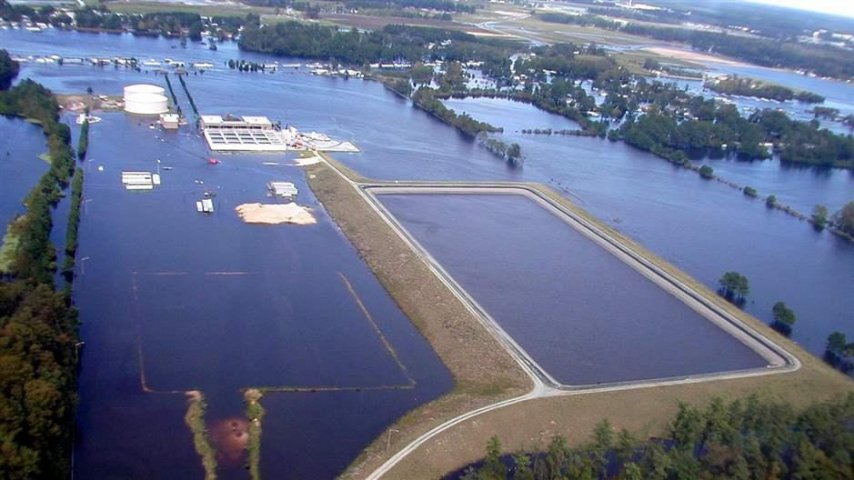
In Natural Hazard Mitigation Saves, the National Institute of Building Sciences makes the case for disaster mitigation using benefit-cost analysis (BCA), a tool of engineering economics. BCA says that if an investment provides a benefit that exceeds its cost, it is desirable. But real people often confound engineers and economists by finding our calculations unpersuasive.
The nobel-laureate economist Richard Thaler famously contrasts homo economicus, an imaginary person who behaves in conformance with economic principles, with real people, who don't. Real people tend to understand the world better through stories. So to complement Natural Hazard Mitigation Saves, NIBS offers this story about one mitigation measure that we studied.
Natural Hazard Mitigation Saves showed that a new berm around the Greenville, NC water treatment plant will save $31 per $1 spent. More tangibly, it protected the plant from Hurricane Matthew in 2016, just a few years after the berm was built. When Greenville Utilities’ public information officer Steve Hawley spoke in 2019 about the berm, he described its psychological impact: "It was a comforting feeling … to know that our team had had the foresight to make sure that when the flood waters come again, our drinking water supply would be just fine … Last year, it was sad to see communities in North Carolina who have not protected their water plants. They were overrun by flood waters caused by Hurricane Florence. Our hearts went out to them and, once the waters receded, our crews went to assist them."
Benefit-cost analysis can help entities like the Economic Development Administration make good bets, but it can't measure the comfort that disaster resilience provided Hawley and his colleagues. Nor did it predict how the berm that saved Greenville's treatment plant freed up resources to go help others when they needed it. Those real, intangible benefits need somehow to be added to the argument for mitigation. This story helps to explain why.
To learn more about the Greenville, NC water treatment plant, see Natural Hazard Mitigation Saves, pp 405-408, or this short summary.




